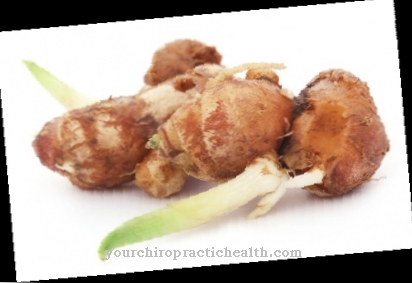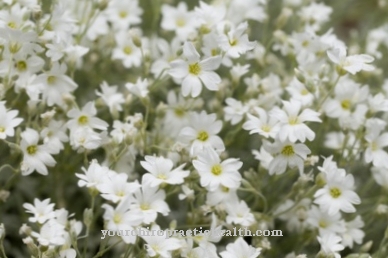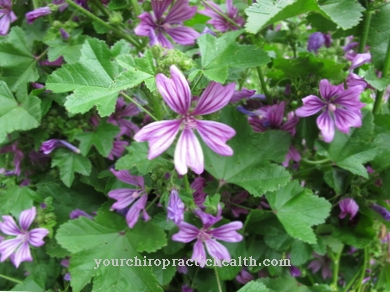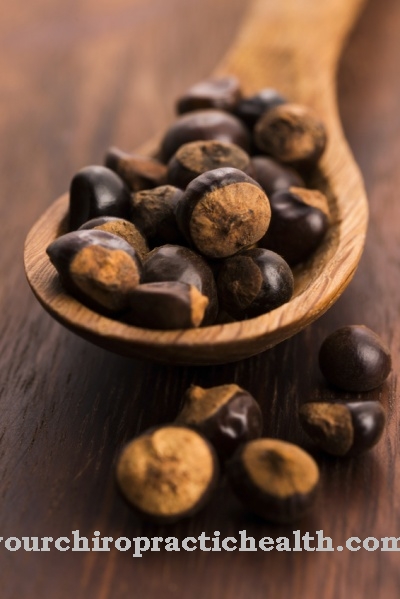The nutmeg Thanks to its warm and spicy, sweetish-bitter, fiery and peppery aroma, it has enriched the kitchen since the Middle Ages. A pinch of the seeds seasoned, finely grated, many different dishes such as mashed potatoes, cauliflower or light sauces. From a botanical point of view, nutmeg is not a nut, but the seed core of the nutmeg tree.
Occurrence & cultivation of the nutmeg tree

The nutmeg, which comes from the Indonesian Banda Islands, was already known as a medicine in ancient times and in antiquity, but at that time it did not play a major role as a spice. Only in the 16th century did nutmeg gain importance in this respect. The nutmeg came into the European kitchens later, but today it is an integral part of the spice palette.
The nutmeg tree is originally native to Indonesia, but is now grown in tropical areas around the world. Nowadays it can be found in Africa, Asia and South America, for example. The most important producing countries are Indonesia, India and Grenada. The evergreen tree can grow up to 20 meters high, although it is usually no higher than six meters on plantations.
The dark green, leathery leaves are short-stalked and lanceolate, pointed. The nutmeg tree, which blooms yellowish-white, has male and female flowers. Yellow stone fruits similar to peaches develop from the female flowers of the tree. The nutmeg, which botanically is a solitary berry, is in a smooth and woody shell. It is surrounded by a bright carmine to purple-red seed coat (mace).
The seed coat is removed and, like the nut, dried. If the shell is removed, the brownish seeds with their net-like surface emerge, which are up to 25 millimeters long and about four grams in weight. The mace fades as it dries. It becomes orange to yellowish brown and three to four centimeters long. The kernels with their slightly wrinkled surface are called nutmeg.
It is aromatic, sweet and spicy and slightly resinous. Nutmeg contains 30 to 40 percent oil, from which nutmeg butter is made when pressed. The nutmeg has been used as a spice grated for over 2,000 years. The nutmeg tree needs an average of about eight years to bear the first fruits and a high-yield harvest only takes place after about 15 years.
Effect & application
The nutmeg can be prepared in many ways. The grated nut boiled with warm milk has, for example, a calming effect due to the essential oils that develop in the process and is particularly helpful in the case of insomnia. Freshly grated nutmeg also stimulates digestion. The essential oils also have an antibacterial effect, so that an external treatment is also effective.
For this purpose, a nutmeg is freshly grated and mixed with water to form a thick pulp. This is given to the inflamed area. The essential nutmeg oil can also be incorporated into creams. The nutmeg butter is used, for example, for digestive problems and externally against skin ailments. The nutmeg is also used to refine numerous dishes.
However, it is used sparingly in the kitchen because it tastes very intense. It has a warm, spicy, aromatic and peppery taste and is often used to season potato and meat dishes, light sauces, cream soups, flower and Brussels sprouts and asparagus, for example. Nutmeg is often used in Italian cuisine in combination with pasta dishes and spinach.
Thanks to its slightly bitter aroma, Christmas bakery cannot be imagined without it. Nutmeg is ground and available as a whole nutmeg. Usually a pinch is enough to give the dishes a nice flavor. The nutmeg should only be added shortly before the end of the cooking time so that the aroma is retained in the food. In the past, nutmeg was so precious that wars were even fought over it, but nowadays the exotic spice is relatively cheap in every supermarket.
Since the aroma evaporates quickly, the nutmeg is best stored in airtight and dark packaging and always rubbed fresh over the food. In quantities of four grams or more, nutmeg is poisonous. Children and pregnant women should avoid them entirely.
Importance for health, treatment & prevention
The nutmeg can be used internally and externally. Here, however, special care is advisable to avoid overdosing. Nutmeg is said to help with numerous diseases and ailments, for example flatulence, diarrhea, stomach cramps, liver, gallbladder and heart weakness, insomnia, eczema and herpes. The essential oils have a pain-relieving effect and can also be used for gout, rheumatism and joint pain.
Nutmeg also has a stimulating, aphrodisiac and performance-enhancing effect, it promotes digestion and relieves cramps. The nutmeg is said to have a very positive effect on the intestinal activity and also to help with gastrointestinal infections with diarrhea and acute gastric mucosal inflammation.
The intestinal walls should become more permeable for the important nutrients through consumption. In addition, the nutmeg relaxes the bloating. It also stimulates the appetite, so that it is often used after a long illness when there is no longer an appetite. In Ayurvedic medicine, nutmeg is also used for incontinence, premature ejaculation and insomnia.



























